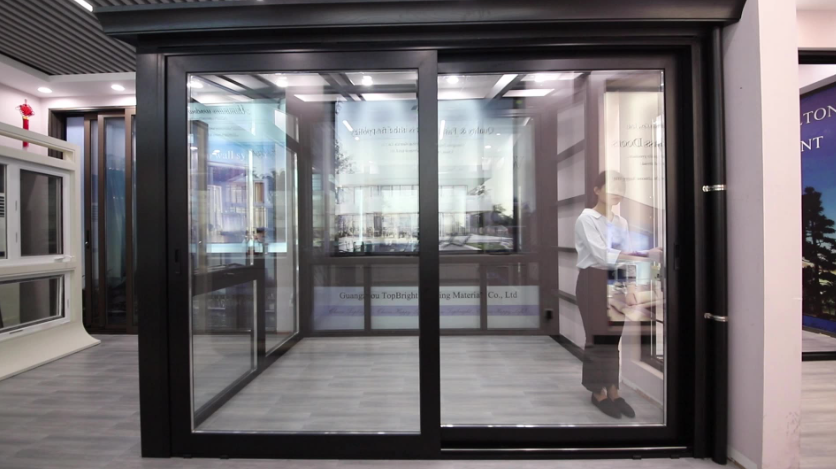Construction projects often unfold on landscapes that challenge standard equipment, with uneven ground, loose soil, or steep slopes. An all-terrain lift for construction steps in as a reliable solution, designed to manage these tough conditions while lifting materials or workers effectively. These machines shine in environments like muddy fields, rocky hillsides, or sandy lots, where regular lifts falter. This article digs into the reasons why these lifts are a smart pick for construction, covering their ability to boost safety, productivity, and cost-efficiency. Understanding their value can shape how crews approach challenging job sites.
These lifts aren’t just another tool—they’re built to tackle obstacles that other machines can’t handle. Let’s explore the specific benefits they bring to construction work.
Handles Rough Terrain Effectively
Construction sites rarely offer flat, paved surfaces. All-terrain lifts are engineered to navigate the unpredictable ground found on most projects.
Superior Traction
Equipped with deep-tread tires or rubber tracks, an all-terrain lift for construction grips surfaces like gravel, mud, or loose dirt. This traction keeps the machine stable and moving, even when conditions get slippery after rain.
High Ground Clearance
A raised chassis allows these lifts to clear obstacles like rocks, roots, or small debris piles. This feature prevents the undercarriage from snagging, ensuring smooth operation across rugged terrain.
Slope Capability
Many models feature four-wheel drive, letting them climb inclines without losing power. This makes them essential for hilly sites where materials need to move uphill.
Boosts Jobsite Versatility
Every construction project has its own demands, and these lifts adapt to a wide range of tasks and conditions.
Multiple Types Available
An all-terrain lift for construction can be a rough terrain forklift, a telescopic boom, or a scissor lift, each suited to different jobs. Forklifts haul materials, while booms reach high or tricky spots.
Weather Resilience
Rain, snow, or wind doesn’t halt these machines. Their sturdy build and sealed components withstand moisture and dust, keeping work on schedule no matter the forecast.
Site Adaptability
From small residential builds to sprawling industrial complexes, these lifts adjust to the scale and scope of the project, offering flexibility across phases.
Improves Worker Safety
Safety is non-negotiable on construction sites. These lifts contribute by reducing risks in rugged settings.
Stable Platforms
Wide bases or outriggers keep an all-terrain lift for construction steady on uneven ground. This stability lowers the chance of tipping, protecting workers and loads alike.
High Reach Safety
Telescopic or articulating booms lift workers to heights safely, replacing unstable ladders or makeshift platforms that pose hazards on rough terrain.
Operator Protection
Cabs often include roll-over protection systems and harness points, shielding drivers from accidents in bumpy or sloped areas.
Increases Productivity
Time is money in construction, and all-terrain lifts help crews maximize both.
Quick Material Movement
A rough terrain forklift, as an all-terrain lift for construction, moves heavy loads like lumber or concrete blocks fast. This cuts down on manual hauling time significantly.
Access to Tough Spots
Articulating booms bend around obstacles, while telescopic models stretch far, letting workers reach areas without constant repositioning. This speeds up tasks like roofing or wiring.
Reduced Setup Time
Unlike cranes that need assembly, these lifts are ready to work quickly, keeping downtime low and progress steady.
Reduces Equipment Strain
Standard lifts wear out fast on rough ground, but all-terrain models are made for the challenge.
Durable Design
Reinforced frames, tough tires, and rugged components handle the stress of uneven sites. An all-terrain lift for construction lasts longer in harsh conditions than regular equipment.
Less Downtime
Fewer breakdowns mean less time spent on repairs. These lifts keep projects moving forward without unexpected delays.
Lower Wear on Parts
Built-in features like shock-absorbing tires reduce strain on hydraulics and engines, extending the machine’s life even under heavy use.
Supports Heavy Loads
Construction often involves moving substantial materials, and these lifts are up to the task.
Load Capacity Range
Rough terrain forklifts, a common all-terrain lift for construction, lift 5,000 to 10,000 pounds or more. This handles everything from steel beams to stacked bricks.
Balanced Lifting
Even on uneven surfaces, these lifts distribute weight to stay steady. This prevents spills that could slow work or damage supplies.
Height Capabilities
Boom lifts reach up to 100 feet or beyond, carrying tools or workers to elevated areas without compromising stability.
Adapts to Project Scale
Construction projects vary in size, and these lifts scale accordingly to fit the job.
Compact Models
Smaller track lifts or mast booms work in tight spaces, like urban sites or early groundwork phases. They’re an all-terrain lift for construction that fits where bigger machines can’t.
Large Reach Lifts
Telescopic booms stretch across vast areas, perfect for big projects like warehouses or multi-story buildings needing high access.
Mid-Range Options
Scissor lifts with all-terrain features bridge the gap, offering moderate height and platform space for medium-sized tasks.
Cuts Costs Over Time
While the initial price varies, these lifts prove economical in the long haul.
Fewer Rentals Needed
Owning an all-terrain lift for construction cuts reliance on rented cranes or extra machines for rough sites. It’s a single investment that covers multiple needs.
Multi-Use Efficiency
One lift can haul, lift, and reach, reducing the need for separate equipment. This versatility trims overall project expenses.
Fuel Efficiency Options
Some models offer hybrid or electric power, lowering fuel costs on sites with charging access, while diesel remains practical for remote work.
Meets Construction Demands
Modern projects push equipment to keep pace. These lifts rise to the challenge.
Speed on Rough Ground
Four-wheel drive or tracked systems let an all-terrain lift for construction cover ground quickly, even in mud or sand, matching tight deadlines.
Height and Flexibility
From low-level material transport to high installs, these lifts handle the full range of site tasks with ease.
Reliability Under Pressure
Built to endure daily use in tough conditions, they deliver consistent performance when timelines can’t afford delays.
Ease of Operation and Maintenance
Practicality extends to how these lifts are used and cared for on site.
Simple Controls
Operators learn fast with intuitive layouts, reducing training time. An all-terrain lift for construction gets to work without a steep learning curve.
Accessible Parts
Common components mean repairs are straightforward. Local dealers or mechanics can service them without long waits.
Routine Upkeep
Basic checks on tires, hydraulics, and engines keep them running. Their design supports easy maintenance on busy sites.
Final Thoughts on All-Terrain Lifts in Construction
An all-terrain lift for construction offers clear advantages for projects on rugged ground. It navigates tough terrain, improves safety, and speeds up work while keeping costs in check. Whether it’s a forklift moving heavy loads or a boom reaching high points, these lifts adapt to any job, big or small. Their durability, versatility, and efficiency make them a practical choice for crews facing uneven landscapes. With an all-terrain lift for construction, projects stay on track, delivering results no matter the conditions.












Leave a Reply